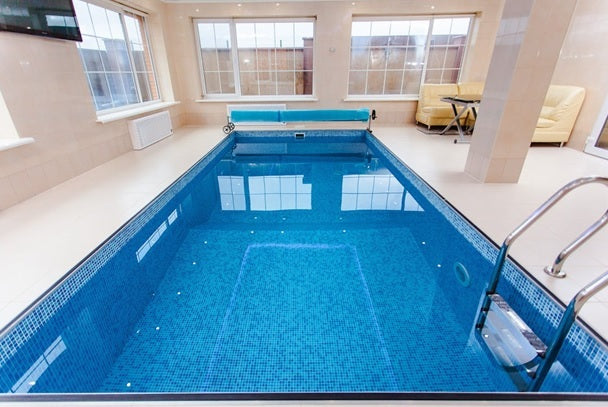Keeping your pool open and clear throughout the year, even in winter, involves strategic maintenance and preparation to protect against cold temperatures, maintain cleanliness, and ensure operational efficiency.
You need to use the accessories and equipment you need for maintaining your pool, but you might need additional accessories you can purchase from an online pool supply store, such as Best Buy Pool Supply.
But how can you use and keep your pool in the colder months? Here's what you can do to manage your pool year-round.
Why Keep Your Pool Open in Winter?
Most people can’t see the need to use a pool in the winter, and often choose to winterize and close their pools until the warmer seasons. However, there are several advantages when you keep your pool open all year round.
- Cost Savings
You can avoid the expenses of winterizing supplies like covers, weights, and chemicals.
- Convenience
There is no need for extensive spring cleaning or dealing with algae blooms common after reopening a pool.
- Reduced Algae Growth
Cooler temperatures below 60°F hinder algae development, lowering the need for sanitizers.
- Less Evaporation
Winter’s cooler climate minimizes water and chemical loss.
However, that doesn’t mean there won’t be challenges. You will experience higher utility costs, as pumps and heaters require constant operation to prevent freezing, increasing electricity or gas expenses.
And you might also experience limited equipment efficiency. Your salt chlorinators and heat pumps often fail to function effectively below 50°F, and the risk of freezing equipment increases. Pumps can sustain damage during freezing temperatures if water circulation is interrupted.
You also need to ensure that your pool is regularly cleaned and balanced throughout the winter, which could be very challenging for many homeowners. If you think the pros outweigh the cons, then opening your pool in the winter is something you might consider.
Winter Pool Maintenance
But pool maintenance is not the same for every season. And in the winter, you need to follow these steps to make sure you are doing your winter pool maintenance properly.
Maintain Water Circulation
Ensure all pool valves are partially open to allow free water movement. Keep the pump running continuously during freezing weather (below 40°F) to prevent pipes from freezing. In mild winters, run the pump a few hours daily, increasing runtime when temperatures drop significantly.
Retain Heat
Use pool heaters in colder climates to maintain water temperatures above 40°F, preventing freeze damage to plumbing. Install a solar blanket or permanent pool cover to trap heat and minimize energy costs.
For pools in warmer regions, solar covers can maintain comfortable temperatures for occasional winter use. Go to an online pool supply store to find the covers and blankets that would fit your pool.
Install Freeze Sensors
Freeze sensors automatically activate pumps when temperatures drop too low, ensuring water continues to circulate. When you want to look for pumps, go to a pool supply store and ask for pumps with built-in freeze protection features for added security.
Winterize Water Features
Even if you plan to open your pool, that doesn’t mean keeping your other water features turned on throughout the season. Turn off and winterize fountains, waterfalls, and deck jets to reduce freeze risk. You also need to close valves to isolate these features from the main system.
Clean the Pool Regularly
Skim the surface to remove debris at least twice weekly. Brush walls and vacuum weekly to prevent buildup, especially if the pool is uncovered. Use an automatic pool cleaner for convenience, particularly in areas with heavy leaf fall.
Balance Water Chemistry
Even in the winter, you need to balance your pool’s water chemistry. Your pH Levels: should be maintained within the range of 7.4 to 7.6. For alkalinity, you need to keep it between 100 to150 ppm.
To maintain calcium hardness, you need to ensure that vinyl liner pools are within 175 to 225 ppm; for concrete pools, 200 to 275 ppm.
For chlorine, you need to reduce levels to 1 ppm during winter due to reduced algae activity and evaporation. Increase to 3 ppm or begin weekly water shocking as temperatures rise above 60°F. Test and adjust chemical levels weekly to protect equipment and prevent water imbalances.
Monitor Water Levels
Keep water levels at least halfway up the skimmer to avoid air entering the pump, which could cause damage. Regularly check and adjust water levels, especially after heavy rainfall or significant evaporation.
Your Pool Can Stay Open in the Winter
Keeping your pool open and clear all year, including during the winter months, can be a manageable task with the right precautions. It does require diligence to avoid damage, but you also need the appropriate accessories and equipment to ensure consistent water quality.
Visit Best Buy Pool Supply if you need accessories for winterizing or maintaining your pool. Our online pool supply store carries the chemicals, materials, and accessories you need to enjoy the benefits of an open pool throughout the year, even during colder seasons.

